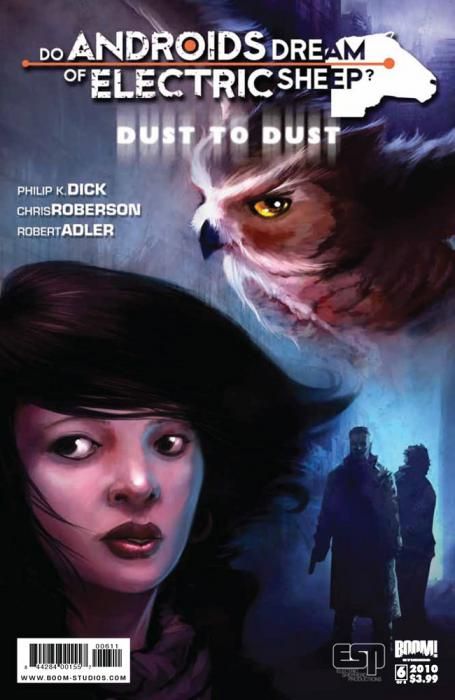Reaching the halfway mark, the BOOM! mini-series prequel to Philip K. Dick's "Do Androids Dream of Electric Sheep?" continues to impress with the way it blends bold storytelling and a daring story. Chris Roberson blends together the feeling of the novel and its film adaptation "Blade Runner" in the plot, while Robert Adler delivers dynamic and frenetic art. Every issue is a welcome sight and manages to be a rare case of a licensed prequel that adds to the original, while standing on its own.
Charlie Victor is an android tasked with hunting other androids on Earth and, hot on the trail of his targets, things get much busier and dangerous in this issue. The issue divides its time between Victor and Malcolm Reed, the empath that's been captured by the androids after they learned that he can somehow detect androids. Reed's mental problems drive much of his narration as he tries to figure out if anything that's happening is real. As far as he knows, the androids that have captured him are hallucinations because of his condition. There's an interesting inversion of expectations with Reed as he seems more calm and collected with the androids. Instead of portraying him as a victim that's struggling to get back to Victor and take down the androids, Reed is so tortured by the presence of humans that an apartment with just androids is a safe haven.
The series revolves around emotions and what they mean. Samantha Wu, the doctor that Victor has shanghaied into helping him, offers some reflections on the problems with emotions; unlike the novel or film, emotions are treated more as a problem for humanity than for the androids. Emotions distract you, wear you down, and can torture you, while the androids can live their lives without that burden. The hunting androids plot may be something fans of the material have seen before, but the subtext definitely approaches this world from a different perspective.
Adler's art has a nervous tension that is both cold and full of passion. His characters are blocky and hard, but the sketchy line work suggests that crazed problem of emotions that the writing focuses on. Adler adjusts his style for certain characters and scenes. Wu is drawn with much tighter, focused lines, while Reed is looser and looks like he's becoming unhinged. More than that, his drawings are very expressive when he shows humans. He makes an effort to differentiate between the two, Wu and Reed wearing their thoughts and feelings on their faces, the androids much calmer.
"Dust to Dust" is a surprising treat in the way it takes some of the basic ideas of "Do Androids Dream of Electric Sheep?" and "Blade Runner" and plays with them, twisting them. Roberson latches onto the idea of emotions, how they affect humans and how androids function without them, and is getting a lot of mileage out of it. Throw in some action, compelling, unique narration from the three main characters, and great art, and you've got a comic worth reading each month.

